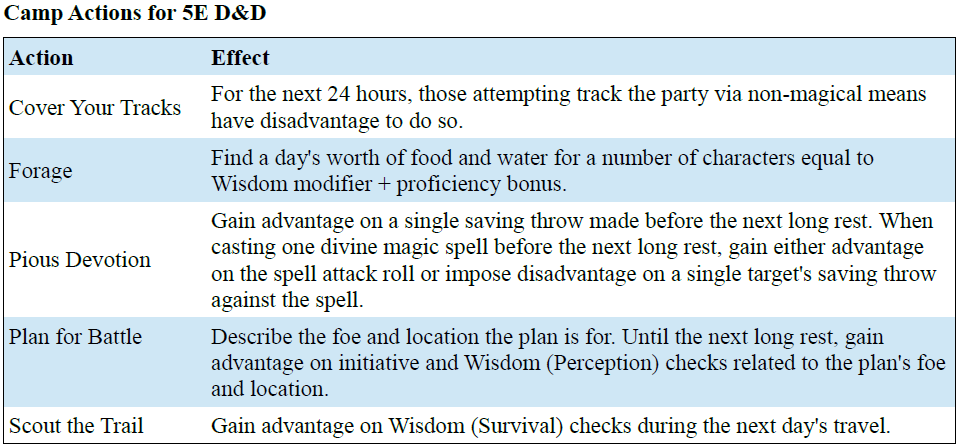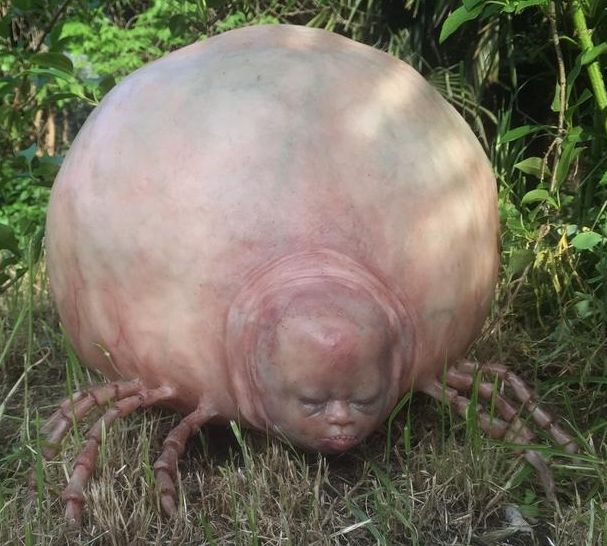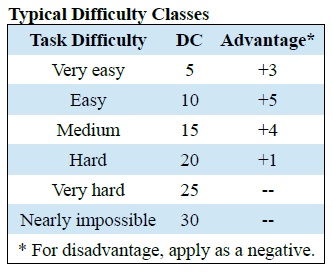Die rolls can be tyrants, and sic semper tyrannis.
Let me rant a bit about one thing about players in 5E D&D that makes me grind me teeth, starting with an example:
Player A: I search for secret doors along the north wall of the room.
(A die is rolled.)
GM: You don’t find a secret door.
Player B: I search too!
And, just like that, the game becomes a series of redundant skill checks as everyone at the table piles on, repeatedly assuming that their individuals characters know two things: (1) the last skill check failed and (2) there is a difference between failure and success for the skill check. Unless one enjoys the clatter of dice as several people each attempt to accomplish what someone else just attempted to accomplish, this sort of thing is not fun. (Nota Bene: Elsewhere, I’ve written about the pitfalls of clue hunting in a game. This isn’t a repeat of that. Well, at least not mostly.)
The GM’s Prerogative
Among the most important things a GM can do (and among the easiest thing for me as a GM to forget) is this simple rule:
No one gets to roll a die to determine success for anything unless I ask you to roll a die.
The GM’s job is to adjudicate the game, not merely to announce the results of die rolls made by the players. Dungeon World does a good job of making this explicit. (Nota Bene: That link goes to my Dungeon World products at DriveThruRPG.) Each player’s turn in Dungeon World goes something like this:
GM: Christopher, what does Hideo do?
Christopher: Hideo slides gracefully forward toward the ghoul. He grips his katana in one hand, his wakizashi in another. With his jaw set grimly, he slashes with the katana, steps to the side, and jabs with the wakizashi, trying to destroy the undead monster!
GM: Wonderful. Roll Hack & Slash.
(Dice are rolled. The results are narrated.)
Notice the dynamic. Christopher’s description of what Hideo does determines the nature of the die roll, not the other way around. 5E D&D should work this way as well. When I as GM ask a player what his character does, I really don’t want to hear, “I attack. I hit armor class fifteen.”
The same applies to skill checks. The player doesn’t get to announce, “I’m make a Diplomacy check!” or “I use Stealth!” The player narrates the character’s actions, thoughts, et cetera. Then, based on that description (and perhaps a minimum of out-of-character clarification), the GM decides what, if any, sort of check is required. A skill check may not be necessary, which brings me to my next subheader.
Fewer Die Rolls, Please
5E D&D characters tend to be competent at a minimum. They’re heroic, even at 1st level. Out of six ability scores, four have positive modifiers. One has a negative modifier. A 1st-level PC has a proficiency bonus of +2, which means that even with an 8 Charisma, a PC can still have a +1 bonus to Persuasion (for example).
Let’s take a look at my sorcerer, Evlis Pressed-Leaf, whom I run in our Sunday game. Evlis is 5th level and has an 18 Charisma. When he is Persuasive, he has a +7 bonus. The lowest roll Evlis can get on a Persuasion check is an 8. If he rolls a 3, he’s already succeeded at an Easy task. (See the adjacent table.) With a 10, he’s exceeded the DC for a Medium task difficulty.
5E D&D includes the idea of passive checks. A PC’s passive check total is a score equal to 10 + all of the modifiers that normally apply to the check. Evlis’s passive Persuasion score is 17. If Evlis has advantage for a skill check, his passive score increases by +5. With advantage, his passive Persuasion score is 22. For a lot his daily life, Evlis shouldn’t be making Persuasion checks, so why roll?
The point? If a PC’s passive score is sufficient to succeed, it’s probably a good idea to not bother with a die roll. The player narrates the action (as above), and the GM describes the result.
About Advantage & Disadvantage
As explained here, advantage or disadvantage does not strictly translate to a 5 point modifier to a d20 roll. The task difficulty affects how rolling 2d20 changes the probability of success or failure. Thus, the Advantage column on the Typical Difficulty Classes table. I can’t imagine using that column during regular game play, but it is instructive. For Hard task difficulty, advantage or disadvantage have little impact on the rate of success. For Easy and Medium task difficulties, advantage or disadvantage have a noticeable impact.
One thing to note is that working together (PH 175 and 192) pays off most in the 10-15 range of difficulties. Attacking with advantage against an AC 20 creature helps less than attacking with advantage against an AC 12 creature, which ought to be obvious.
Team Work
In the rules, working together is not the same thing as a group check. Evlis helping Longtum pick a lock is an example of working together. If the GM allows it, the thieves’ tools check is made with advantage. The same thing applies to two characters trying to smash down a door, et cetera. Working together ought to be fairly common, and, when combined with passive scores, goes a long way toward cutting down die rolls.
A group check is a different animal. Group checks are less common, and apply only to situations where the group succeeds or fails as a group. If four characters all search a wall for secret doors, that’s not really a group check. That’s an example of working together. A single success is all that is needed. Three out of four characters failing their checks don’t keep the fourth character from succeeding.
Back to the Beginning
Player A: I search for secret doors along the north wall of the room.
GM: Okay, but first, where is everyone else, and what are they doing?
Player B: I’m guarding the door on the other side of the room, watching the corridor to make sure nothing sneaks up on us.
Players C and D: We’re examining the locked chest.
GM: How?
Player C: I’m using my thieves’ tools to probe for traps.
Player D: Good idea. I’m nearby, sword and shield ready just in case it’s another mimic.
(Player A rolls a die.) Player A: I got a 19!
GM: I didn’t ask you to roll yet. First, describe what your character does.
Player A: Um, he gets close to the wall, pressing his cheek against, looking for irregularities in the surface while he runs his hands along the wall, feeling for the same, moving from the left side of the wall to the right.
GM: Make a Perception check.
Player A: (Rolls a die.) I got a 6.
Player B: I search too!
GM: No, you don’t. Your character doesn’t know what the die roll was, and he’s clear across the room, watching the corridor. (Compares the PC’s passive Perception to the approaching monster’s passive Stealth.) Suddenly, an emaciated humanoid lunges from the shadows, slashing at you with its ragged talons!
Player C: I shoot an arrow at it!
GM: No, you don’t. You’re busy with your thieves’ tools.
Et cetera.
Tags: 5E D&D, game play






